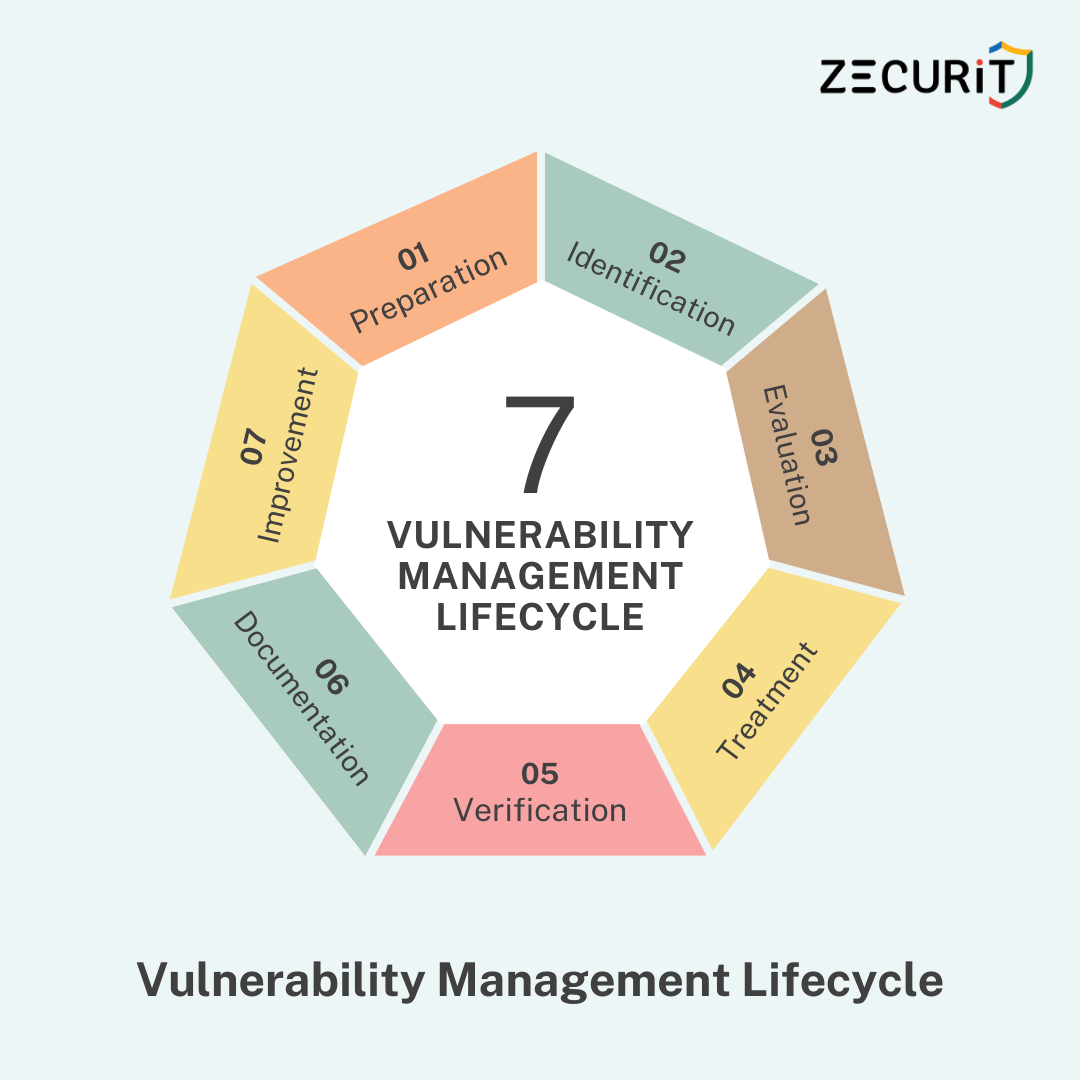Discover how to systematically identify, assess, and mitigate cybersecurity risks with this comprehensive guide to vulnerability management.
In today’s increasingly digital world, organizations face a constant barrage of cyber threats. Vulnerability management has emerged as a cornerstone of effective cybersecurity, helping organizations identify, assess, and mitigate vulnerabilities in their IT environments. But what exactly is vulnerability management, and how can businesses implement a comprehensive strategy? This guide covers everything you need to know about vulnerability management.
Vulnerability management is the process of identifying, assessing, prioritizing, and remediating security vulnerabilities in an organization’s IT infrastructure. It is a proactive approach aimed at reducing the risk of exploitation by attackers, safeguarding critical assets, and ensuring compliance with industry standards and regulations.
At its core, vulnerability management involves:
Discovery: Identifying all assets and vulnerabilities within the IT environment.
Assessment: Evaluating the severity and potential impact of identified vulnerabilities.
Prioritization: Determining which vulnerabilities require immediate attention.
Remediation: Addressing vulnerabilities through patching, configuration changes, or other measures.
Reporting and Monitoring: Continuously tracking vulnerabilities and the effectiveness of remediation efforts.
Mitigating Cyber Risks
Unpatched vulnerabilities are a leading cause of cyberattacks, including data breaches and ransomware.
Regulatory Compliance
Regulations like GDPR, HIPAA, and PCI DSS mandate regular vulnerability assessments to ensure data security.
Protecting Business Continuity
Proactively managing vulnerabilities reduces downtime and maintains the trust of customers and stakeholders.
Cost Efficiency
Addressing vulnerabilities early is far more cost-effective than dealing with the aftermath of an exploit.

Maintain an up-to-date inventory of all hardware, software, and network components. Without visibility into assets, it’s impossible to identify vulnerabilities effectively.
Use automated tools to scan the IT environment for known vulnerabilities. These tools rely on databases like the Common Vulnerabilities and Exposures (CVE) repository to identify weaknesses.
Evaluate the potential impact of each vulnerability based on factors like:
The criticality of the affected asset.
The likelihood of exploitation.
The potential business impact.
Not all vulnerabilities are created equal. Use frameworks like the Common Vulnerability Scoring System (CVSS) to prioritize vulnerabilities based on severity.
Implement corrective actions such as:
Applying security patches.
Configuring systems securely.
Removing or isolating vulnerable assets.
Keep detailed records of vulnerabilities, remediation efforts, and their outcomes. Regular reports help demonstrate compliance and measure the effectiveness of the vulnerability management program.
Vulnerability management is not a one-time activity. Continuously monitor your environment for new vulnerabilities and changes to existing ones.

A successful vulnerability management program follows a continuous lifecycle:
Preparation
Define the scope, objectives, and stakeholders of the program.
Select the tools and resources required for effective management.
Identification
Conduct regular scans using vulnerability assessment tools.
Perform manual assessments for areas where automated tools may fall short.
Evaluation
Analyze scan results and contextualize vulnerabilities within your organization’s risk framework.
Treatment
Remediate vulnerabilities using appropriate measures, such as patching, upgrading, or applying workarounds.
Verification
Validate that remediation efforts have been successful through rescans or testing.
Documentation and Reporting
Compile insights into reports for internal review and external compliance audits.
Continuous Improvement
Use lessons learned to refine processes, tools, and policies.
Automate Where Possible
Leverage tools like Nessus, Qualys, or Rapid7 to automate vulnerability scanning and reporting.
Integrate with Patch Management
Ensure seamless collaboration between vulnerability management and patch management processes.
Adopt Risk-Based Prioritization
Focus on high-impact vulnerabilities rather than attempting to fix everything at once.
Foster Cross-Team Collaboration
Involve IT, security, and business units in vulnerability management efforts.
Stay Informed
Regularly update tools and processes to address emerging threats and vulnerabilities.
Use Threat Intelligence
Incorporate real-time threat intelligence to contextualize vulnerabilities and prioritize critical issues.
Test and Validate
Regularly test your vulnerability management program through penetration testing or red team exercises.
Volume of Vulnerabilities
Organizations often struggle with the sheer number of vulnerabilities identified during scans.
Resource Constraints
Limited budgets and personnel can hinder remediation efforts.
Complex IT Environments
Hybrid and multi-cloud environments add complexity to vulnerability management.
False Positives
Tools may generate false positives, leading to wasted time and resources.
Lack of Integration
Disjointed tools and processes can result in inefficiencies.
Tenable Nessus: A widely used vulnerability scanner known for its ease of use and comprehensive coverage.
Qualys Vulnerability Management: Offers cloud-based scanning and detailed reporting capabilities.
Rapid7 InsightVM: Provides advanced analytics and integrations for a holistic approach.
OpenVAS: An open-source alternative for vulnerability scanning.
Microsoft Defender for Endpoint: Ideal for organizations heavily invested in Microsoft ecosystems.
Vulnerability management is a critical component of any organization’s cybersecurity strategy. By systematically identifying, prioritizing, and addressing vulnerabilities, businesses can significantly reduce their attack surface and enhance overall security. While challenges exist, adopting best practices, leveraging the right tools, and maintaining a continuous improvement mindset will ensure long-term success.
Investing in a robust vulnerability management program not only protects your organization but also builds trust with customers, partners, and stakeholders. In the ever-evolving cybersecurity landscape, proactive vulnerability management is no longer optional, it’s essential.
Vulnerability management is the process of identifying, assessing, prioritizing, and addressing security weaknesses in an organization's IT infrastructure. It is important because it helps mitigate cyber risks, ensures compliance with regulations, protects business continuity, and reduces costs associated with breaches or exploits.
Vulnerability assessment is a one-time process focused on identifying vulnerabilities in a system. Vulnerability management, on the other hand, is a continuous and proactive approach that includes identifying, prioritizing, remediating, and monitoring vulnerabilities over time.
Popular tools include:
FEATURES
EXPLORE IT Asset Management